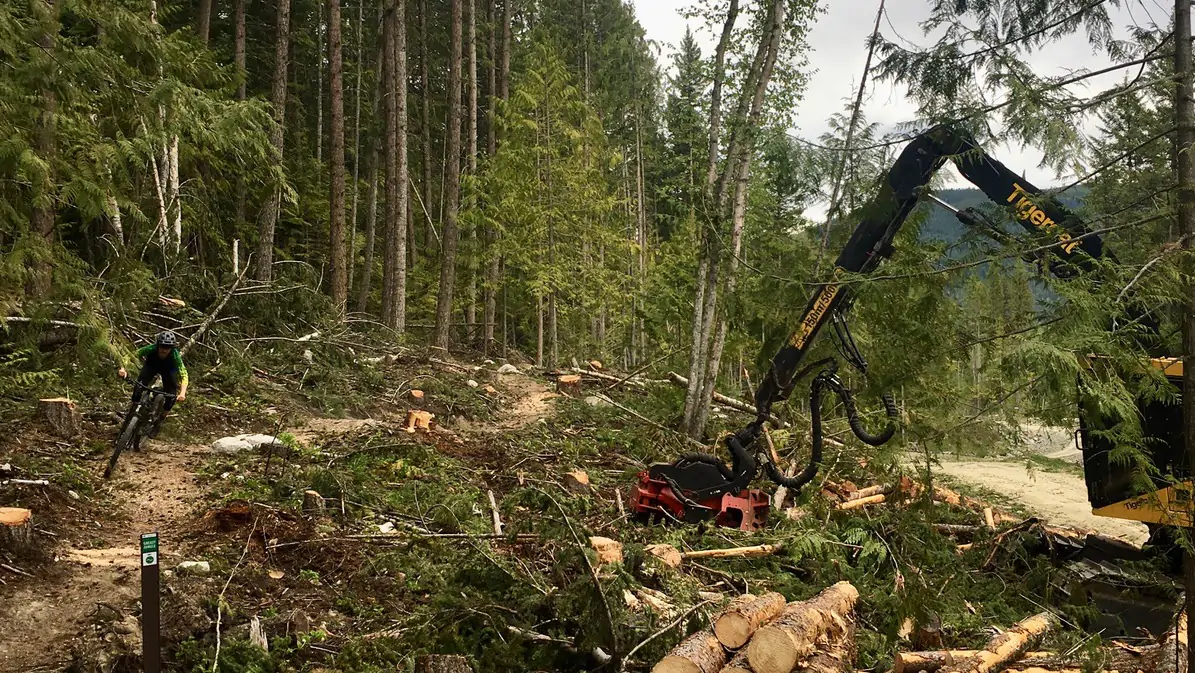
Roots of Resilience: Unveiling the Community Forest's Role in BC Mountain Biking
One underappreciated truth within the mountain bike community in British Columbia is the central role played by community forests in the development and success of our thriving network of trails.
All throughout the province, dozens of trail networks have been built on lands tenured and managed by community forest corporations. The community forests provide expertise, funding, resources, the foundation upon which many of the trails we know and love to ride, are built upon. It’s time we recognized their role in building our community.
This is certainly the case for the Candle Creek Trails in Clearwater in the North Thompson River valley northeast of the City of Kamloops on Highway 5, Simpcw’lucw, the lands of the Simpcw First Nation.
For the people of Clearwater and Wells Gray, this role is filled by the Wells Gray Community Forest Corporation (WGCFC).
According to the British Columbia Community Forest Association, a community forest “is a forest operation managed by a local government, community group, or community-held corporation for the benefit of the entire community. At its core, community forestry is about local control over and enjoyment of the monetary and non-monetary benefits offered by local forest resources.”
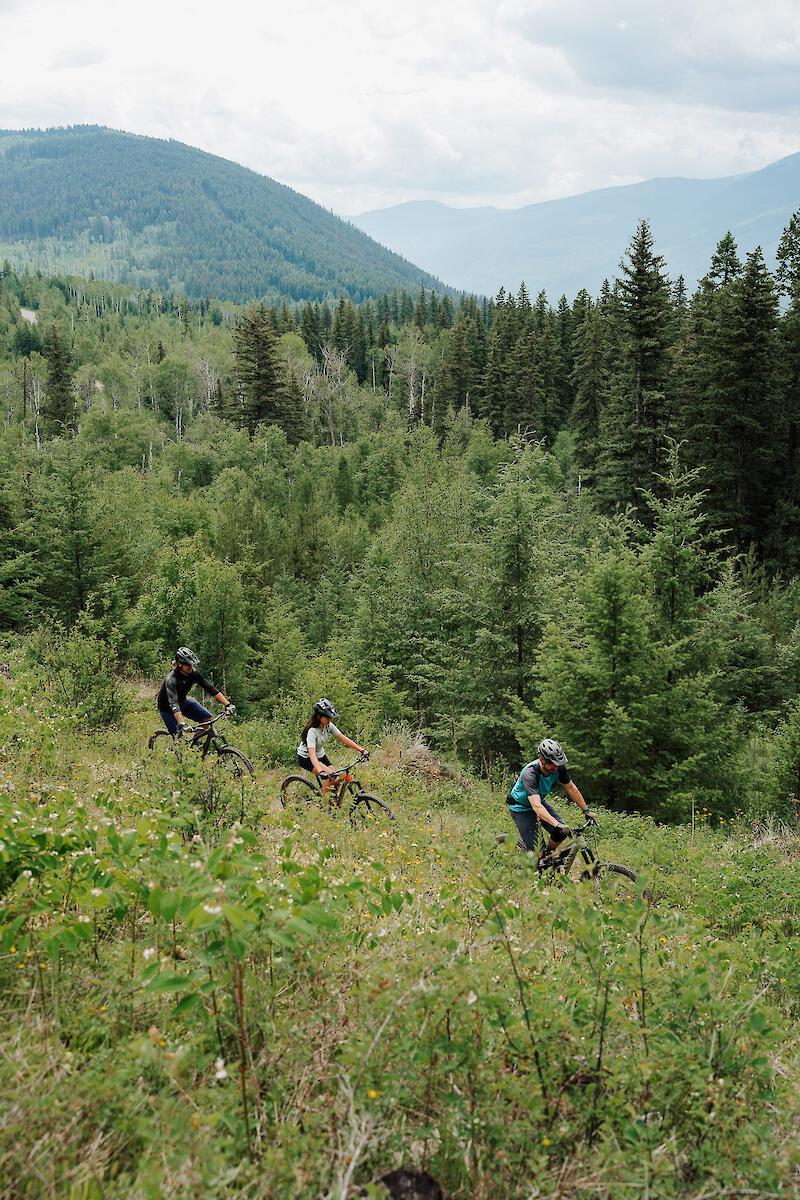
Bike convoy - Candle Creek Bike Trails (photo by Ruby Hogg)
Formed in 2006, the WGCFC manages an area of 13,148 hectares of land with an Annual Allowable Cut of 33,000 cubic metres of timber, providing jobs and revenues for the community. The tenure is also home to more than 25km of cross-country ski trails and 36 km of world-class single-track mountain bike trails.
The community of Clearwater, situated immediately adjacent to Wells Gray Provincial Park, has a long history of outdoor recreation and adventure sports. The Wells Gray Outdoor Club has been a fixture in the community for decades and was responsible for creating and building the Candle Creek trails as a Nordic ski centre. When the WGCFC first received its licence in 2006, the trails were already well-established and well loved.
For community foresters, managing the forest in their care is about more than the volume of timber and board feet calculations, but also considering and planning for non-timber resources as well as the needs and priorities of the broader community. These principles allow community forest boards to create management strategies that are more inclusive and expansive to accommodate a broader range of users and values.
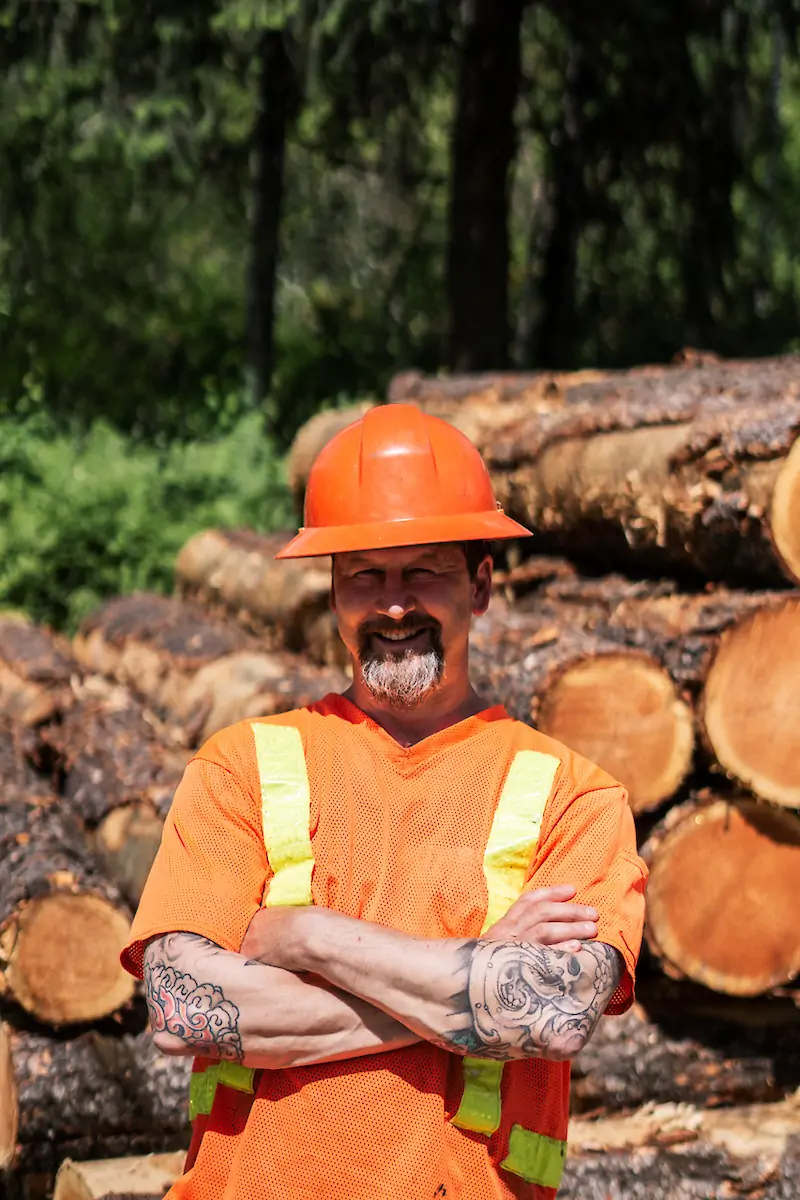
George Brcko, General Manager for the Wells Gray Community Forest Corporation (WGCFC)
For George Brcko, General Manager for the WGCFC for the past eighteen years, this meant bringing in the Wells Gray Outdoor Club right from the very beginning.
“We connected with the club right from day one,” Brcko explained to me over a phone call. “We’re all friends and neighbours here. The WGCFC was willing to make the efforts to prioritize the protection of the trails from the get go.”
That approach allowed the existing ski trails and the local Nordic community to thrive and flourish.
Brcko and the board of the WGCFC understood that building community was essential to the success of the community forest. This meant reaching out and engaging with the original caretakers and stewards of the land, the Simpcw First Nation.
The Simpcw First Nation is part of the Secwepemc people, the people of the North Thompson River. With a territory of more than five million hectares that stretches to the headwaters of the Fraser River and the Jasper National Park, they have always been the caretakers and stewards of their lands. To this day, they assert their rights and title and operate throughout their territories assuming a role in any industries on their lands, including holding a seat on the board of directors for the WGCFC.
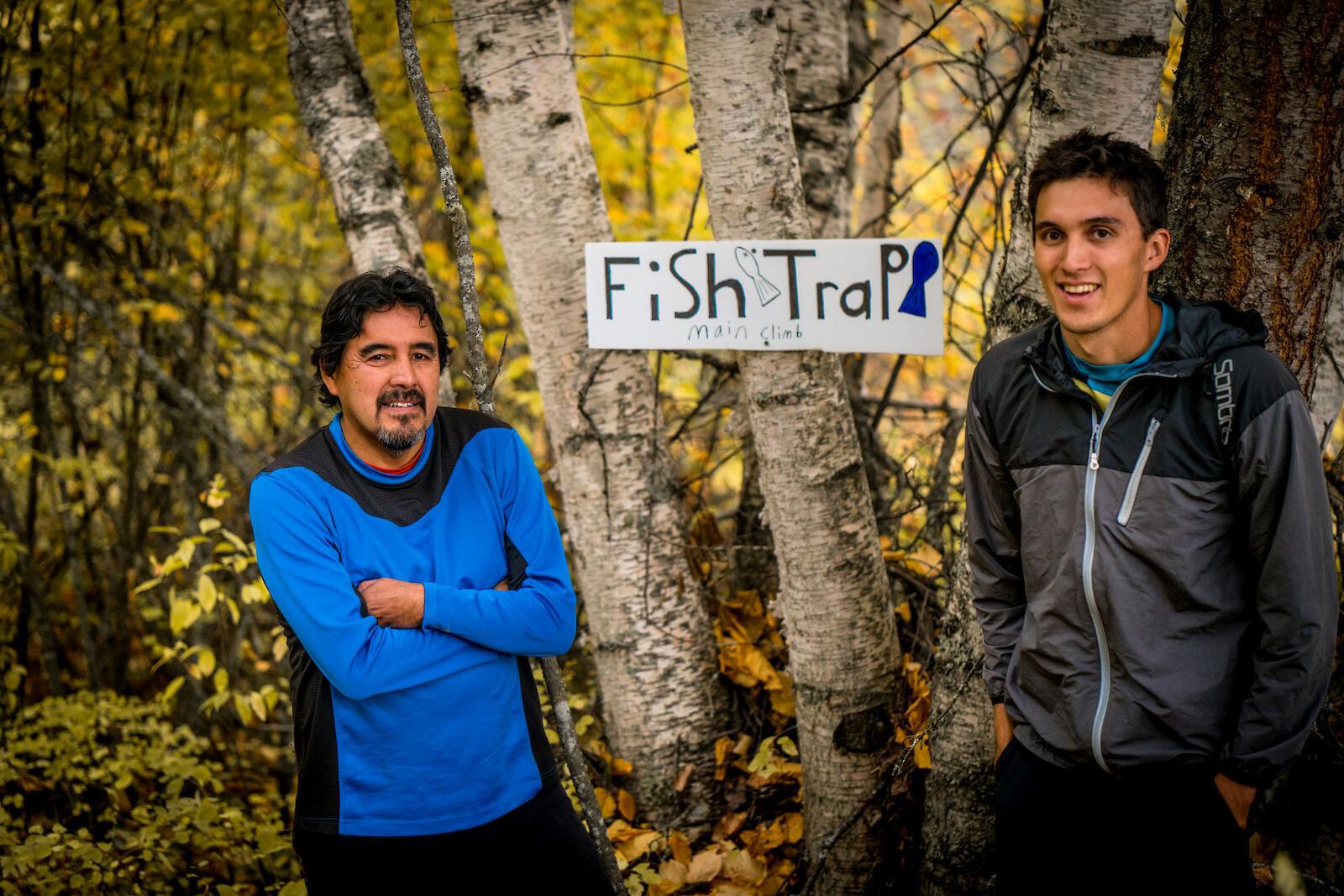
Tom Eustache and his son Skylar from the Simpcw First Nation (photo by Robin Munshaw, 2017)
The Simpcw First Nation was also extensively involved in trails and outdoor recreation. Tom Eustache, a member of the nation, former elected councilor and the Maintenance Supervisor for Nation, is an avid rider and mountain bike enthusiast. With the help of his nephew Leon, his son Skylar and some volunteers, they built nearly 20km of singletrack trails on the hills above their community of Chu Chua.
As with their approach with the Outdoor Club, the WGCFC placed a high priority on engaging and building a relationship with the Simpcw First Nation. They sought opportunities to meet and include them in planning and management as well as providing a dedicated seat on the board.
Then, the Wells Gray Outdoor Club approached Brcko with a new idea for the trail network: mountain bike trails. Brcko and the WGCFC supported the concept and provided up to 50% of the required funds to get things started. The Outdoor Club retained trail specialists from the International Mountain Bike Association of Canada to create a trail master plan and set out to create a riding destination.
Since 2013, the Outdoor Club and the WGCFC have worked together and completed 22 trails comprising 36km of riding including everything from beginner level greens to gnarly black diamond descents.
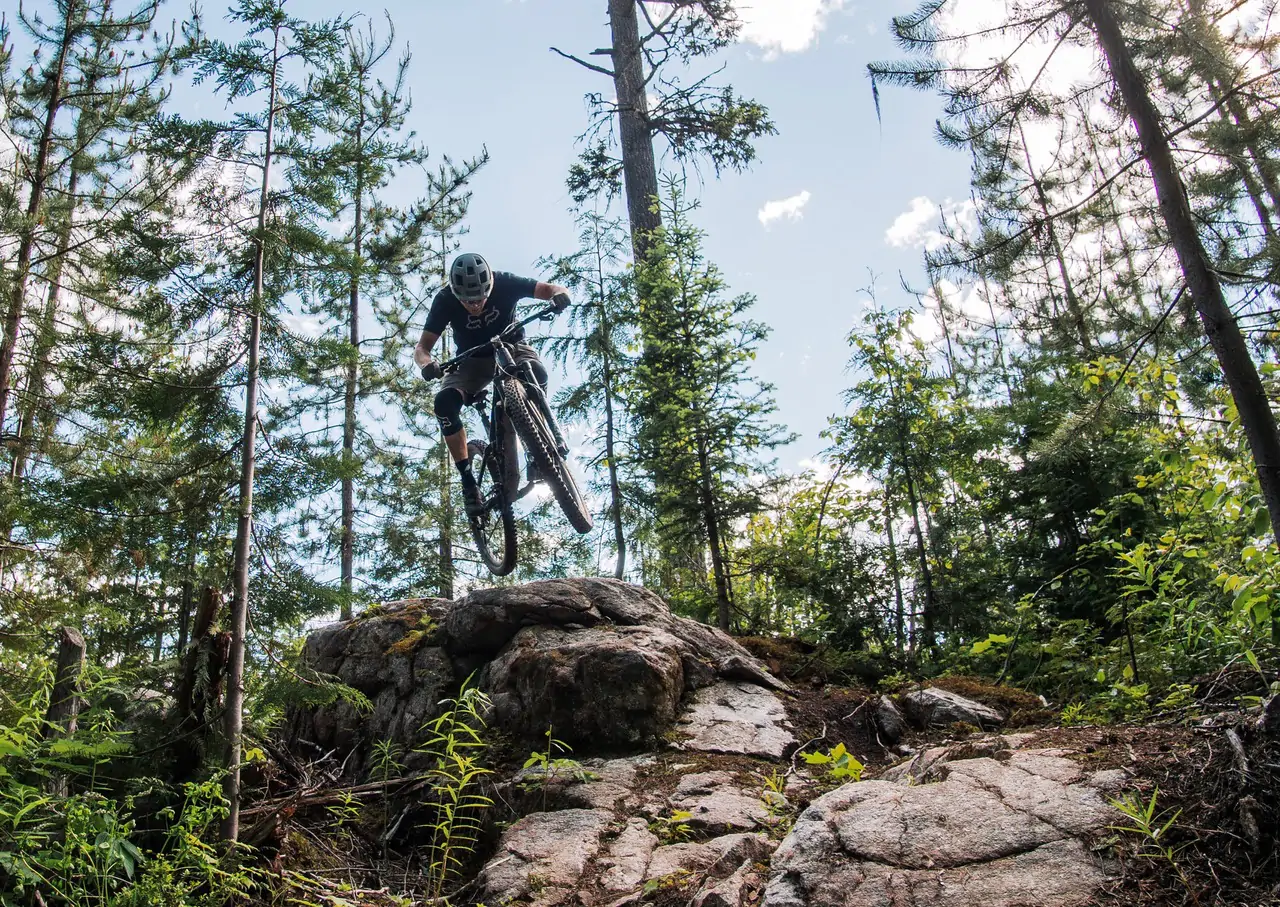
“There’s something for everyone,” Aaron Cooperman, a long-time member of the Outdoor Club explained to me. “The trails are definitely family and beginner friendly, but there also some pretty challenging technical trails for more advanced riders.”
For Brcko and others in Clearwater, the success has come from a powerful sense of community.
Brcko continues to invite club board members Darren Coates and Aaron Cooperman to join him on walking the land together to examine the layout of cut blocks and to seek opportunities to protect and enhance the trails. The club and the WGCFC worked closely together, walking the planned cut blocks and developing plans and strategies to protect the trails during forestry operations and harvests and then providing funds and resources to repair trails when damages did occur.
Brcko explained his approach to trail protection. “We were careful to plan cuts so that the trails were buffered with standing trees around the trails so that it feels like you’re still in a forest.”
Having the mandate to make those kinds of operational choices is a feature of a community forest.
“It’s a lot easier when you can slow things down and you’re not just worried about filling up the mill,” Brcko said.
It also helps when some of the loggers are riders or know people who use the trails. “Your mom could be using,” Brcko added. “We know the kids who are riding the trails.”

Photos by Ruby Hogg
Maveric Northcott, the owner of Wells Gray Outfitters, echoes this sense of community solidarity and purpose. “The outdoor club and the community forest are committed to accessibility,” Maveric told me. “The trails are planned and built to encourage new people to get new people out riding. The condition of the trails is great and there is a committed group of volunteers to make sure they stay that way.”
This commitment to community and accessibility convinced Maveric that Clearwater was the right place for his family. After a couple of seasons working for Mike Wiegle Helicopter Skiing, Maveric and his partner chose to make Clearwater home and opened Wells Gray Outfitters in April of 2023. According to Maveric, the trails are helping his business grow with lots of locals coming and wanting new bikes to try riding the trails out for themselves.
This growth has supported new outdoor related businesses to grow in the community, including a new campground established near the trails, the Raft Rim Campground.
The trails also help deepen the relationship between the WGCFC, the community, and the Simpcw First Nation. During the construction of the trails, several professional trail builders from the Nation were invited to work on the trail crew and lend their expertise.
For Tom Eustache, such partnerships are an important part of his people fulfilling their role as the caretakers of the land and to assert their rights and title throughout their traditional territories.
“Our Nation’s goal is to be involved and lead on any and all developments throughout our lands and territories. We appreciate when groups [like WGCFC and the Wells Gray Outdoor Club] respect our rights and title and work with us to care for the land. This is how we create opportunities and prosperity for everyone.”

Photo by Ruby Hogg
The philosophy of community-based forestry is at the heart of the success of the Candle Creek Trails, providing a platform that brought a broad range of people together to create something that served everyone’s needs. And you can see it in the trails: fast, flowy, fun, accessible, and above all else, based in a powerful sense of community and shared responsibility.
Check out the Candle Creek Trail Network on Trailforks and discover all the great to see and do in Clearwater at Tourism Wells Gray.
